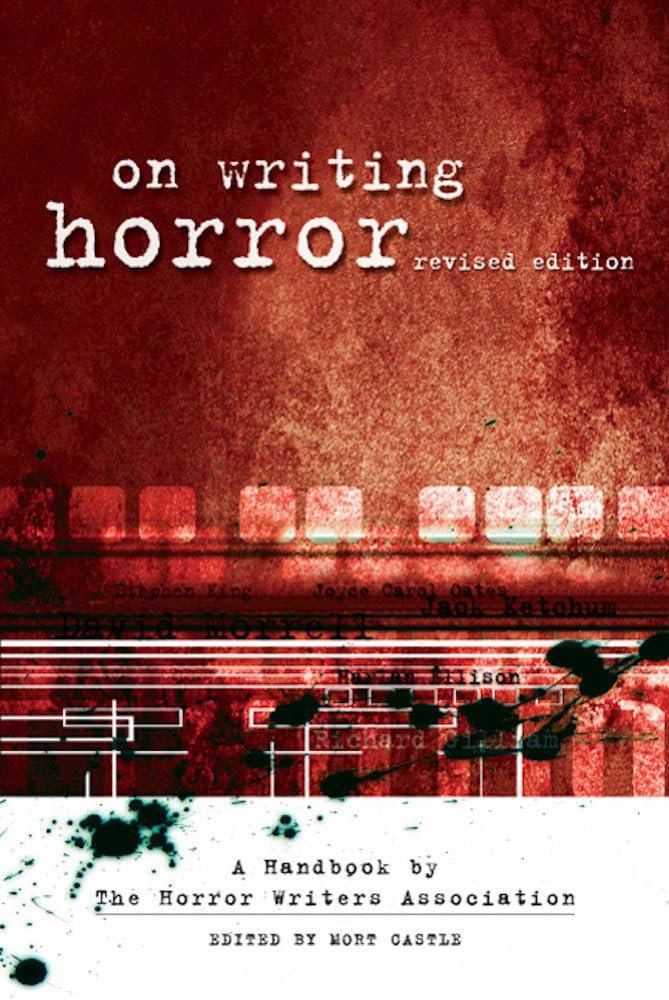
30 Aug Mastering the Macabre: A Deep Dive into On Writing Horror
Unveiling the Shadows: A Review of On Writing Horror: A Handbook
As a lifelong fan of horror—both in literature and film—I stumbled upon On Writing Horror: A Handbook edited by the Horror Writers Association and felt an irresistible pull. A compendium filled with insights from masters such as Stephen King, Joyce Carol Oates, and Harlan Ellison? It felt like an invitation to enter a dimly lit room filled with secrets, just waiting for someone bold enough to explore.
From the moment I opened the book, I was struck by its wealth of knowledge, perfectly packaged within 272 pages. Each contributor brings their own flavor, revealing the art and craft behind making your spine tingle, your heart race, and your imagination swirl with dread. The variety of voices is perhaps its greatest strength; you get everything from Jack Ketchum’s visceral takes on violence to Ramsey Campbell’s warning against clichés that can dull the edge of horror.
The themes discussed in this handbook revolve around understanding what makes horror resonate deeply with readers. There’s an emphasis on character and setting, especially from Mort Castle, who teaches us that the most terrifying monsters can sometimes be those lingering in our own backyard. I especially loved Ketchum’s section on writing violence—not glorifying it, but rather making it impactful and alarming in ways readers can feel in their bones. There’s a distinct sense of responsibility tied to writing horror, a lingering moral thread that challenges writers to approach their craft with care and intent.
The writing, naturally, flows like a conversation among friends sharing their experiences, mistakes, and triumphs. It’s approachable without sacrificing depth, making it accessible to budding writers and seasoned authors alike. I found myself highlighting several passages, especially when the contributors shared their own stories of fear—both in their lives and their writing. These glimpses into vulnerability made the advice all the more poignant and relatable.
One moment that stuck with me was a reflection on the classics, where Robert Weinberg discusses how tales like Dracula and The Exorcist can still send shivers down our spines because they tap into fundamental human fears. It’s a reminder that horror is not merely about blood and gore; it’s about exploring the darker corners of the human psyche. This insight was a revelation for someone like me who sometimes struggles to articulate the profound emotional journeys behind a scary story.
As I turned the final pages, I contemplated who would benefit from On Writing Horror. It’s a must-read for anyone itching to pen their own tales of terror—whether you’re a novice writer looking to find your voice or a seasoned veteran hoping to refine your craft. Beyond aspiring authors, I believe horror enthusiasts will find a treasure trove of insights that deepens their appreciation for the genre.
Ultimately, this book invigorated my passion for horror literature and encouraged me to think about the careful construction of narratives that provoke genuine fear and thoughtful engagement. After all, the scariest stories might not just haunt the reader; they can leave an indelible mark on the writer’s journey as well. If you, too, are drawn to the shadows, I wholeheartedly recommend diving into this handbook for a chilling yet enlightening experience!
You can find On Writing Horror: A Handbook by the Horror Writers Association here >>









